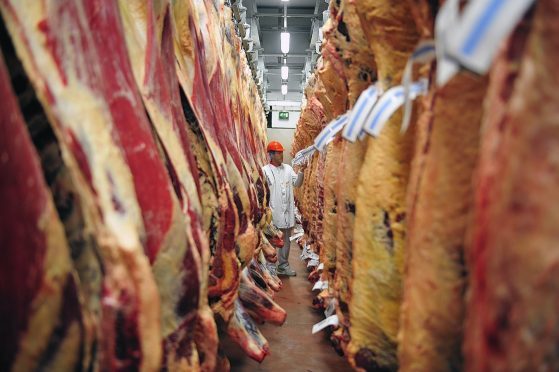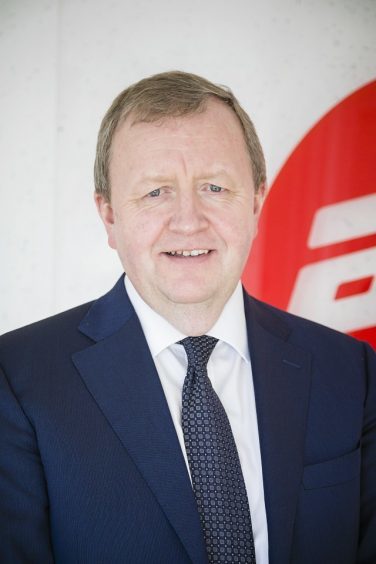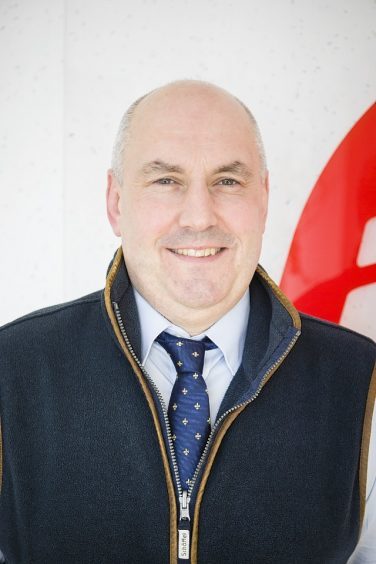Up to 1,500 cattle from across Scotland are slaughtered and processed at ABP’s plant in Perth every week.
The facility, which employs 280 people, was taken over by the ABP Food Group in 1997.
Since then the company has ramped up production from a previous weekly throughput of around 800 cattle, and invested in new grading facilities with the use of visual image analysis (VIA).
It has also patented a unique way of preparing carcases and most recently called on the help of world-renowned animal handling expert Temple Grandin to design a new lairage and live cattle handling facility.
ABP UK managing director, Tom Kirwan, said the Perth plant was part of a global £2.5billion turnover company operating across 46 sites in eight different countries.
Within the UK the firm processes around 500,000 cattle and 1million sheep per year at 15 sites. These are sourced from more than 12,000 UK farmers, including the 1,200 producers who supply the Perth plant.
“The backbone of our operations is the slaughter and processing of beef and sheep,” said Mr Kirwan.
He said maintaining good working relationships with farmer suppliers was crucial and the plant’s manager, Frank Ross, said the creation of an extensive network of procurement officers had proved invaluable.
Both Mr Kirwan and Mr Ross were keen to respond to ongoing farmer criticism over cattle weights – the Perth plant is looking for cattle no heavier than 420kg deadweight.
Mr Kirwan said the requirement for all cattle to be under a certain weight was driven by consumer demand.
“We are not changing weights to penalise farmers; absolutely not. The reality of the situation is that the consumer that we serve has dictated that they like to buy their steak meat fixed weight and that has increased the amount of product we sell,” said Mr Kirwan.
“The product that fits in the fixed weight bracket for us gives us the better eating experience and it allows us the higher price.”
He said bigger cattle were not suitable for fixed weight steaks as a bigger eye muscle resulted in a thinner steak with a less enjoyable eating experience.
Mr Ross said farmers supplying the Perth plant had made a dramatic improvement with regards cattle weights in the past 18 months, with only a small percentage not hitting the required specification.
He called on more producers to come and visit the plant to see the VIA system and also get a better understanding of what type of cattle were required by the market.
Mr Ross said producers would also benefit from seeing the firm’s patented ultra tender process for carcase preparation, which involves electrostimulation of the meat, hyperstretching, controlled cooling and maturation.
Mr Kirwan said the requirement for lighter cattle had resulted in a dramatic increase in the number of Aberdeen-Angus sired beasts going through the plant in the past two years.
“It dovetails in with the fixed weight steak but also the amount of branded Aberdeen-Angus on shelf. The traditional breeds are back in fashion,” said Mr Kirwan.
At present the plant offers a premium of up to 20p a kilo for Aberdeen-Angus cattle.
Mr Ross said: “I think we will see [in future] more native breeds used, not just for the finished animal but also for the suckler cows. A lot of the suckler cows are continental breeds which are producing the bigger cows.”
He admitted the move to spring-calving was making it more difficult to ensure year-round supply of cattle, however procurement officers were managing to source cattle all year round from all corners of Scotland
The latest QMS data suggests around half of all Scottish calves are born in March, April and May.
This, said Mr Ross, had also contributed to previous problems with queues for cattle waiting for slaughter.
However regular suppliers were less affected and Mr Ross said the company would always do its best to fit cattle in if they were at risk of getting too heavy due to having to wait for slaughter.
On the issue of Brexit, Mr Kirwan said the immediate concern for the company was the status of its non-British employees – these account for 80% of the workforce at Perth.
There were also potential issues with food security as the UK is only about 64-65% self-sufficient in beef production.
“No matter what happens with Brexit we have to ensure that the British consumer places a high value about the work that the farmers do in the beef industry,” said Mr Kirwan.
He said the business was also watching with anticipation to see what would happen to farm subsidy payments post-Brexit.
“At the end of the day we are part of a supply chain that supplies food to the British consumer and part of that supply chain is the effect that Common Agricultural Policy (Cap) has good, bad or indifferent,” said Mr Kirwan.
“What post-2020 looks like is crucial to restore confidence to the farmers and us.”


